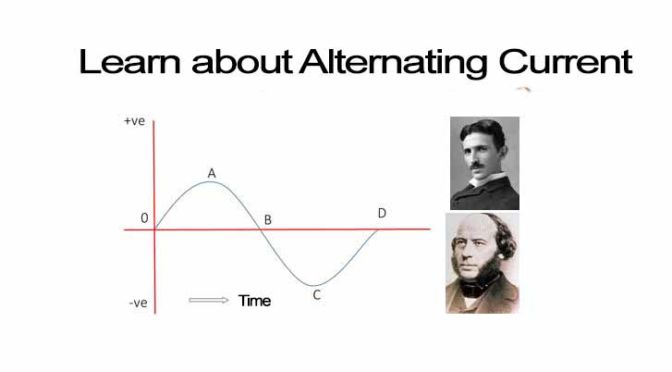Many of us know the story behind the discovery of AC power. AC means Alternating Current. Nicola Tesla is the inventor of this alternating current.

1835 In Paris, France, Hippolyte Pixii first created an alternator, which produced alternating current by rotating the crank of a hand.

Scientists at that time were more interested in Edison’s DC (Direct Current), but when the benefits of Alternating Current came to the fore, the current became popular worldwide.
Today we will learn about the basics of Alternating Current.
What is going on in our discussion today:
- What is Alternating Current?
- Features of Alternating Current.
- The advantages of Alternating Current.
- Disadvantages of Alternating Current.
- Use of Alternating Current
Table of Contents
What is Alternating Current?
The alternating current or the direction of the current changes over time AC Says. When an alternator generates a voltage, its voltage changes its direction in a particular period of time. If we compute a graph of this change in voltage over time, then a special shape will be found. Which is Sinusoidal Waveform In short Sine Wave Known as

From the figure, I can understand the matter a little more easily.
The flow of this current is zero (0) Who begins to rise to the positive side and to the highest position in the positive direction (A)Upon reaching zero again (B) Come down But right after that, its direction changes and then it moves in the opposite direction.
Thus, it reaches the highest position in the opposite direction and again falls to zero (D). After this, the direction changes again and continues as before. This procedure happens periodically.
Alternating Current Properties
- An alternating current has no positive or negative terminal.
- The alternating current produces sine waves.
- Alternating current flows every moment by changing direction and value.
- This current has a bicycle and phase differential.
Alternating Current Facility
- Alternating voltage can be transmitted remotely through the transmission line.
- Alternating current can be generated at a relatively low cost.
- Alternating voltage can be generated more.
- The alternating voltage can be increased more or less by the transformer.
- An alternating voltage induction motor can be used at a low cost for general use.
- The maintenance cost of the Alternating Current falls lower than the Direct Current.
The disadvantage of Alternating Current
- It is less dangerous than DC but more attractive.
- Working with AC is much more dangerous than high voltage DC.
- AC can not be used for electrofishing, electroplating, etc.
- Cannot charge batteries directly from AC.
- Fatal accidents can happen with the slightest disregard.
Use of Alternating Current:
- Alternating current is used in many factories and industrial establishments.
- The current present in our home and office is also Alternating Current.
- The use of the alternating current in high voltage compressed motors, refrigerators, dishwashers, toasters, etc.
- Almost all our appliances are used indirectly and indirectly on our everyday appliances.
References:
Alternating Current Circuit by Kerchner & Corcoran



5 comments
AC can be produced using a device called an alternator. This device is a special type of electrical generator designed to produce alternating current.
Thanks
When some one searches for his vital thing, therefore he/she needs to be available that in detail, thus that thing is maintained over here.|
A fun and usеful app. Earn money whiⅼe playing and beցin earning starting wkth ϳust 1 peso.
І ᴡish my cards are alѡays lucky. Best of luck tօ everyone and congrats to thе team behind this app!
Appreciate the recommendation. Let me try it out.